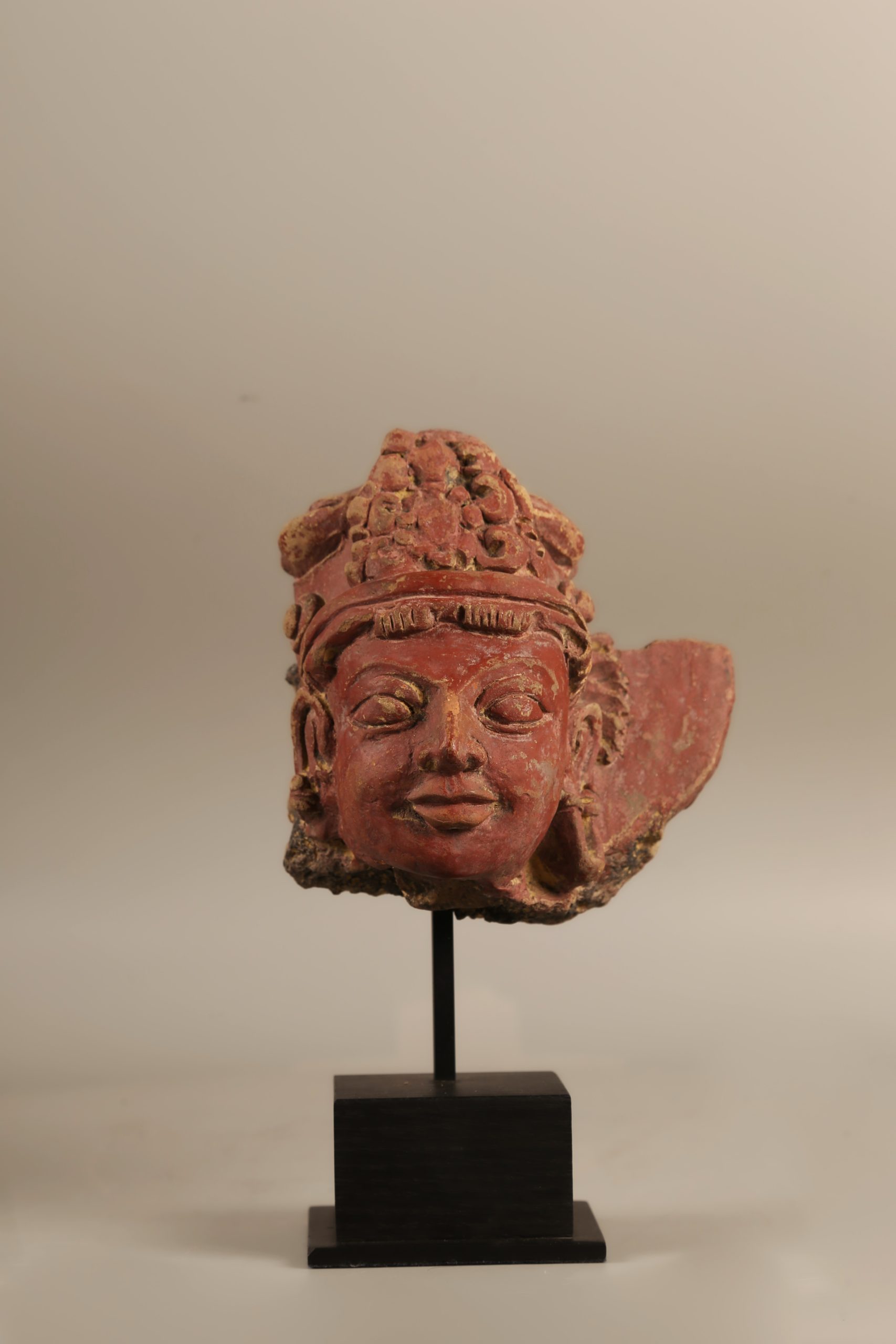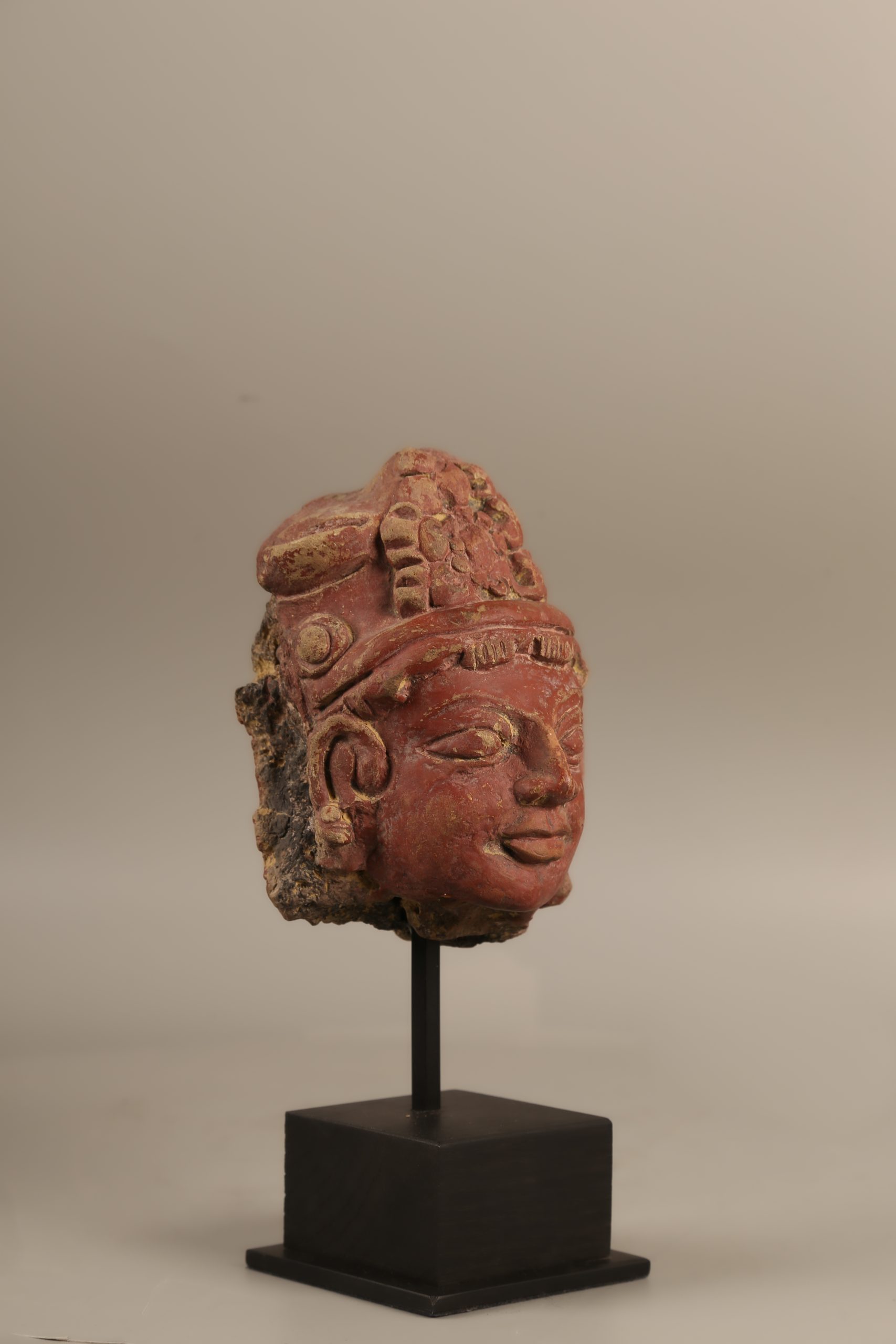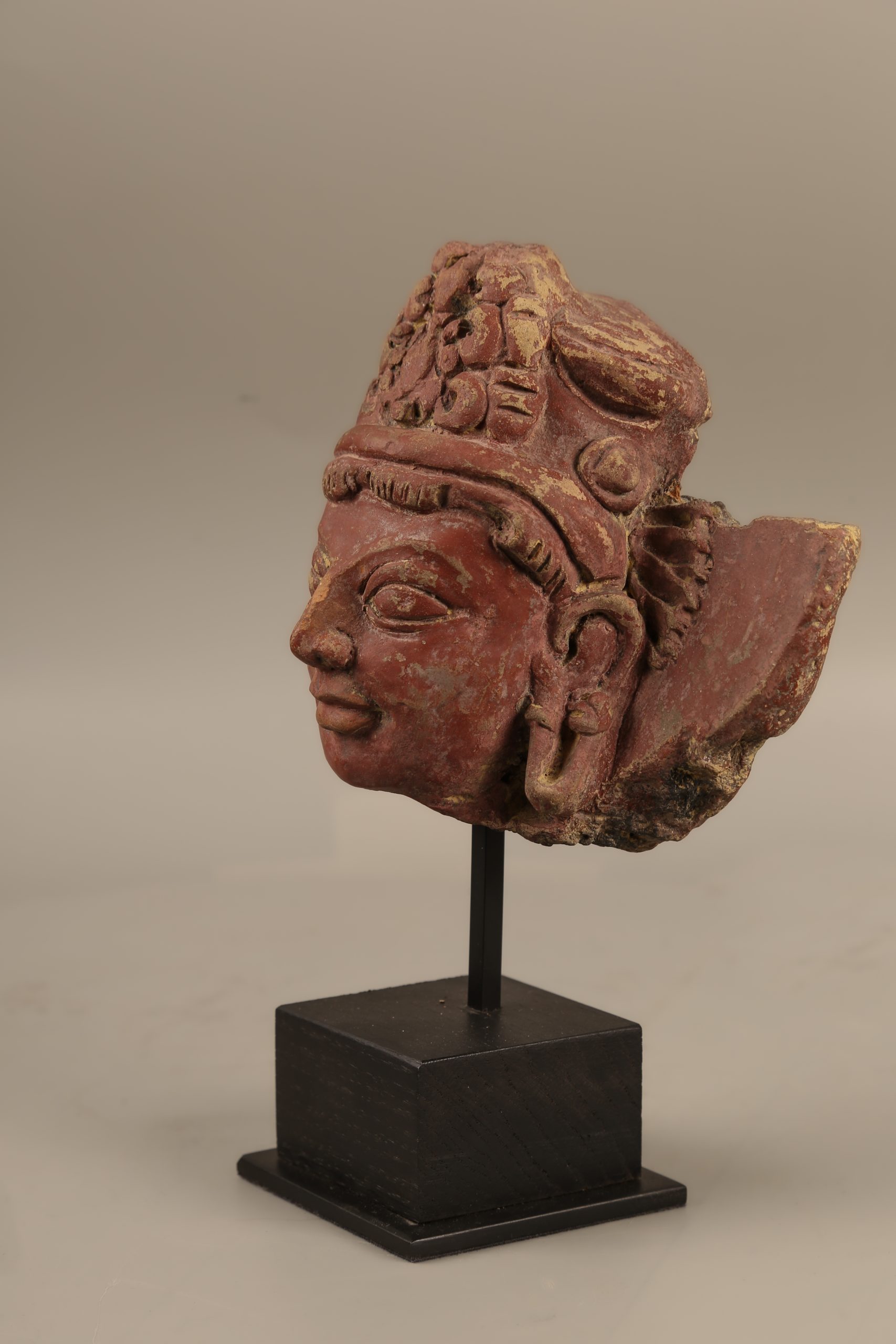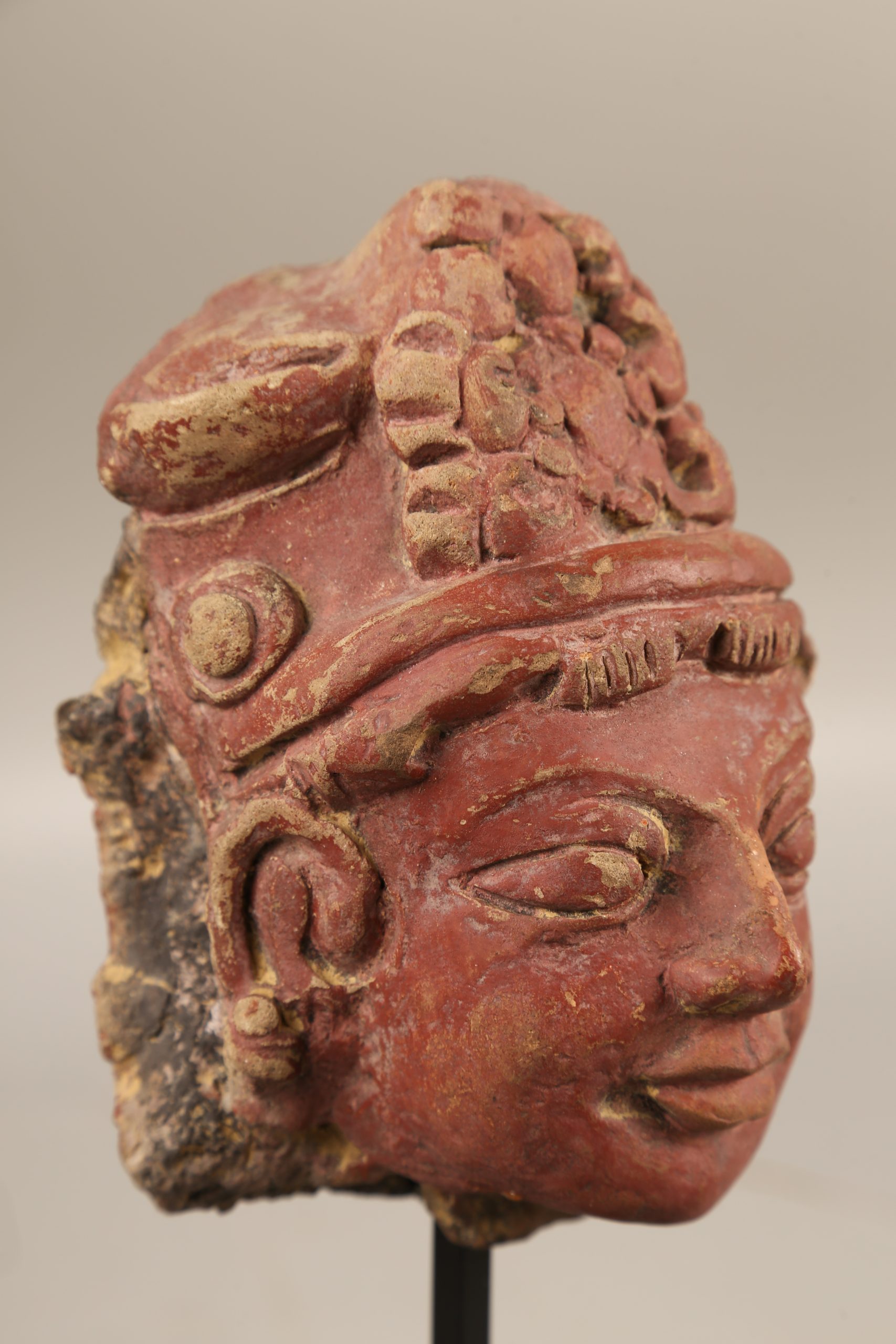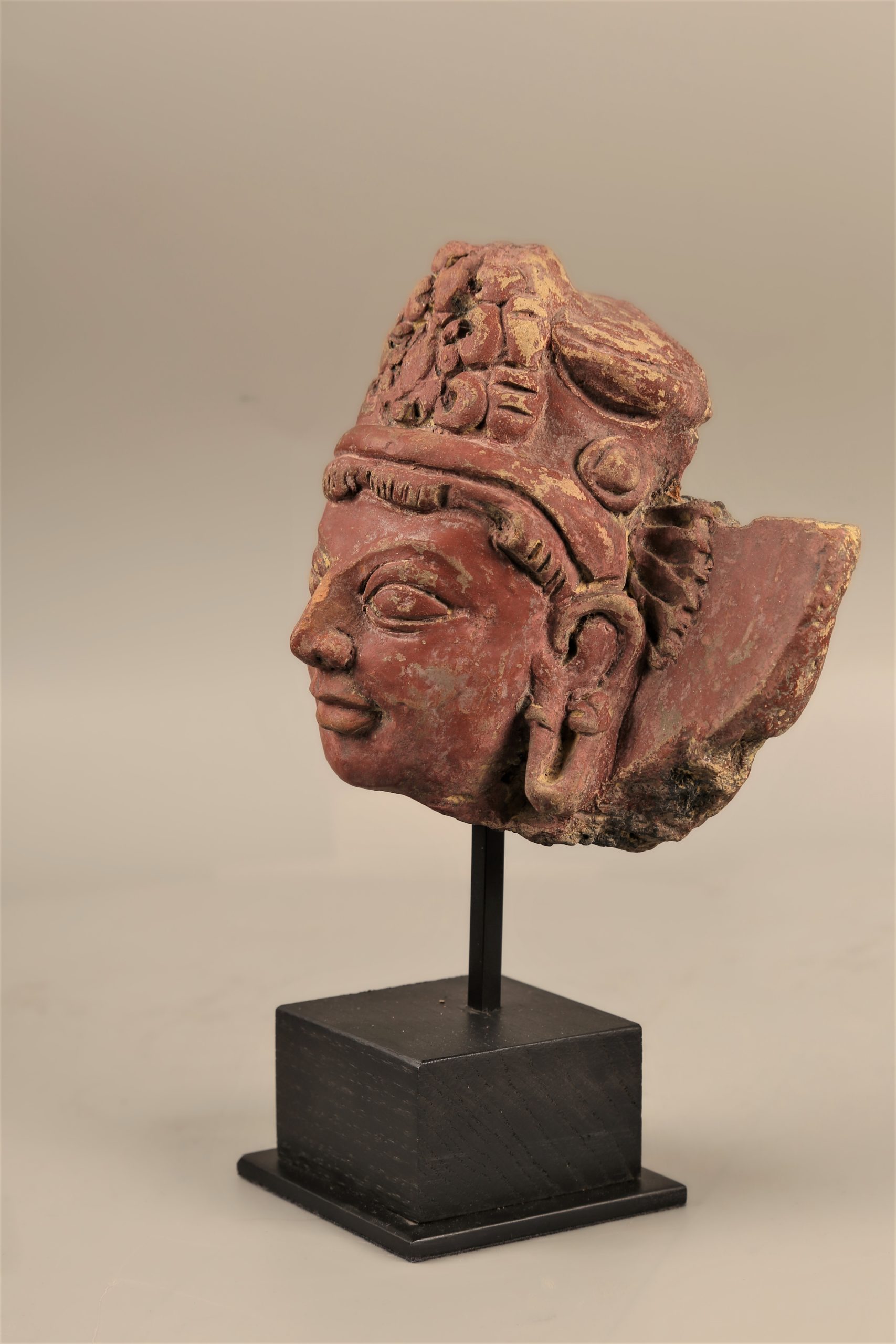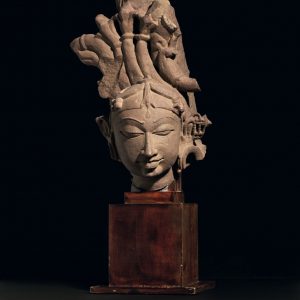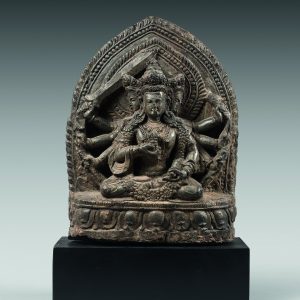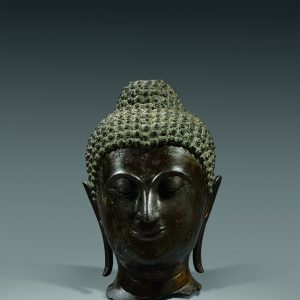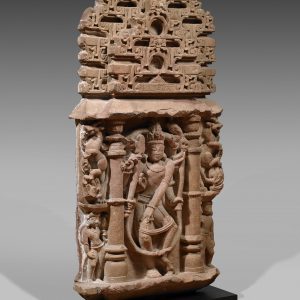Deity head
Terracotta
India
6th-8th century
H. 14,5 cm
Description
The Gupta period (4th – 6th century) is often considered the classical period of Indian art.
The Gupta aesthetic, the classical period of Indian art
The Gupta period is often referred to as the “golden age” of Indian art, when humanism triumphed in religious art. Here, the face with its stylised features and sober and gentle modelling is in keeping with this much appreciated aesthetic. The same is true for the very large, slightly protruding eyes with hemmed and incised contours, which are placed under curved eyebrows. Nevertheless, if the dating corresponds to the Gupta period, we note some resurgences of the Kusana aesthetic. Indeed, given the artistic effervescence that reigned over this region for centuries, the production bears witness to certain reminiscences, such as the full shape of the face or the smile, which is strongly marked here.
The popularity of human images
This deity was probably an integral part of a temple decoration temple decoration, and the fragmentary nature of the fragmentary nature seems to confirm this hypothesis, although the figure stands out almost in the round. It is also an example of an example of an image that effectively combines an accessible human figure human figure with the sublime. The gentle humanity, so appreciated in Gupta sculpture, is evident in this finely carved face finely sculpted face with full, smiling lips and a dynamic dynamic expression.
Provenance: French private collection.

